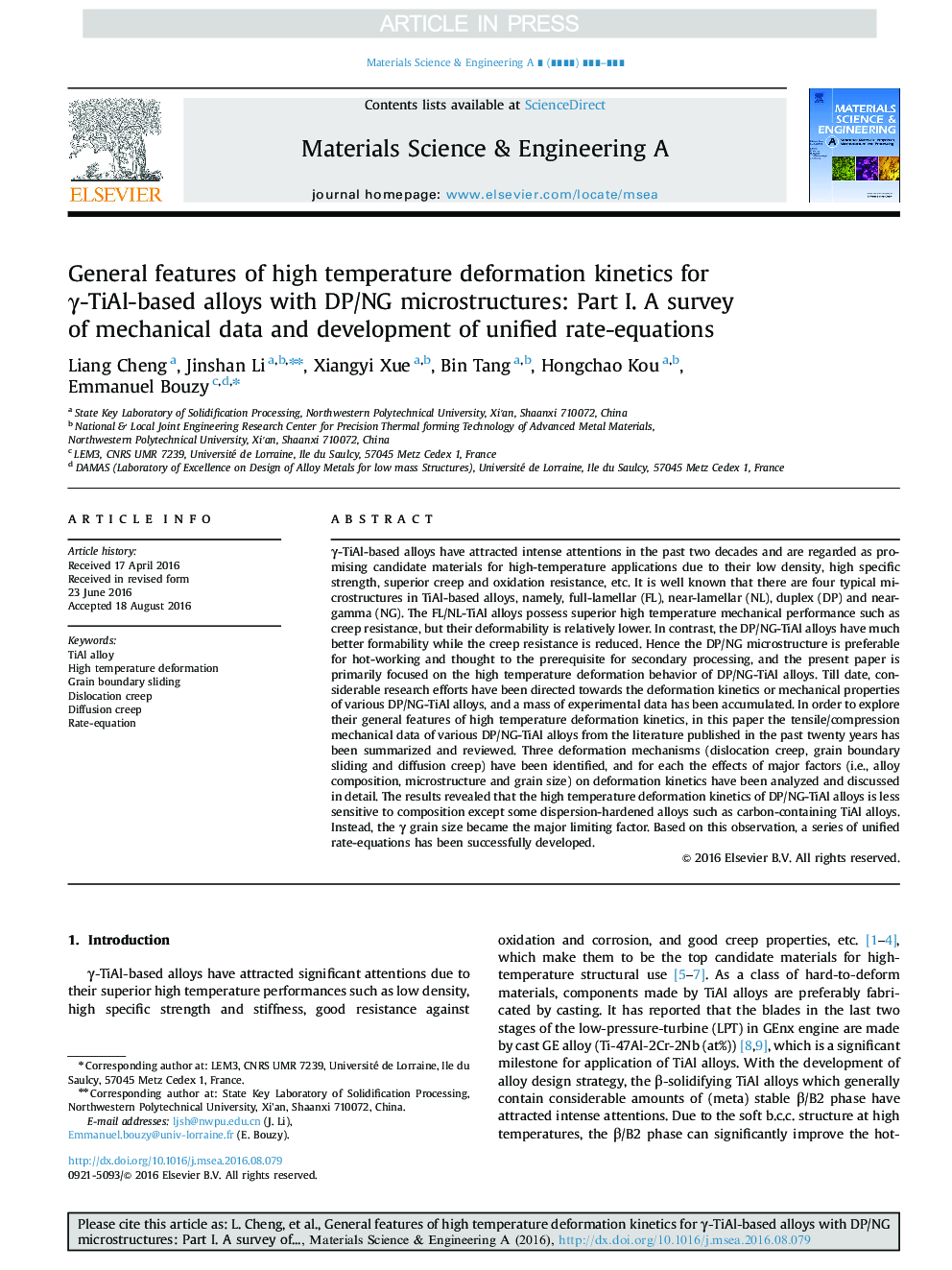| Article ID | Journal | Published Year | Pages | File Type |
|---|---|---|---|---|
| 5456573 | Materials Science and Engineering: A | 2016 | 13 Pages |
Abstract
γ-TiAl-based alloys have attracted intense attentions in the past two decades and are regarded as promising candidate materials for high-temperature applications due to their low density, high specific strength, superior creep and oxidation resistance, etc. It is well known that there are four typical microstructures in TiAl-based alloys, namely, full-lamellar (FL), near-lamellar (NL), duplex (DP) and near-gamma (NG). The FL/NL-TiAl alloys possess superior high temperature mechanical performance such as creep resistance, but their deformability is relatively lower. In contrast, the DP/NG-TiAl alloys have much better formability while the creep resistance is reduced. Hence the DP/NG microstructure is preferable for hot-working and thought to the prerequisite for secondary processing, and the present paper is primarily focused on the high temperature deformation behavior of DP/NG-TiAl alloys. Till date, considerable research efforts have been directed towards the deformation kinetics or mechanical properties of various DP/NG-TiAl alloys, and a mass of experimental data has been accumulated. In order to explore their general features of high temperature deformation kinetics, in this paper the tensile/compression mechanical data of various DP/NG-TiAl alloys from the literature published in the past twenty years has been summarized and reviewed. Three deformation mechanisms (dislocation creep, grain boundary sliding and diffusion creep) have been identified, and for each the effects of major factors (i.e., alloy composition, microstructure and grain size) on deformation kinetics have been analyzed and discussed in detail. The results revealed that the high temperature deformation kinetics of DP/NG-TiAl alloys is less sensitive to composition except some dispersion-hardened alloys such as carbon-containing TiAl alloys. Instead, the γ grain size became the major limiting factor. Based on this observation, a series of unified rate-equations has been successfully developed.
Keywords
Related Topics
Physical Sciences and Engineering
Materials Science
Materials Science (General)
Authors
Liang Cheng, Jinshan Li, Xiangyi Xue, Bin Tang, Hongchao Kou, Emmanuel Bouzy,
